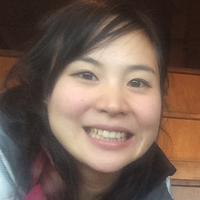3D Menagerie: Modeling the 3D Shape and Pose of Animals
pdf video
There has been significant work on learning realistic, articulated, 3D models of the human body. In contrast, there are few such models of animals, despite many applications. The main challenge is that animals are much less cooperative than humans. The best human body models are learned from thousands of 3D scans of people in specific poses, which is infeasible with live animals. Consequently, we learn our model from a small set of 3D scans of toy figurines in arbitrary poses. We employ a novel part-based shape model to compute an initial registration to the scans. We then normalize their pose, learn a statistical shape model, and refine the registrations and the model together. In this way, we accurately align animal scans from different quadruped families with very different shapes and poses. With the registration to a common template we learn a shape space representing animals including lions, cats, dogs, horses, cows and hippos. Animal shapes can be sampled from the model, posed, animated, and fit to data. We demonstrate generalization by fitting it to images of real animals including species not seen in training.
| Author(s): | Silvia Zuffi and Angjoo Kanazawa and David Jacobs and Michael J. Black |
| Links: | |
| Book Title: | Proceedings IEEE Conference on Computer Vision and Pattern Recognition (CVPR) 2017 |
| Pages: | 5524--5532 |
| Year: | 2017 |
| Month: | July |
| Day: | 21-26 |
| Publisher: | IEEE |
| Project(s): | |
| Bibtex Type: | Conference Paper (inproceedings) |
| Event Name: | IEEE Conference on Computer Vision and Pattern Recognition (CVPR) |
| Event Place: | Honolulu, HI, USA |
| Electronic Archiving: | grant_archive |
| ISBN: | 978-1-5386-0457-1 |
| ISSN: | 1063-6919 |
BibTex
@inproceedings{Zuffi:CVPR:2017,
title = {{3D} Menagerie: Modeling the {3D} Shape and Pose of Animals},
booktitle = {Proceedings IEEE Conference on Computer Vision and Pattern Recognition (CVPR) 2017},
abstract = {There has been significant work on learning realistic, articulated, 3D models of the human body. In contrast, there are few such models of animals, despite many applications. The main challenge is that animals are much less cooperative than humans. The best human body models are learned from thousands of 3D scans of people in specific poses, which is infeasible with live animals. Consequently,
we learn our model from a small set of 3D scans of toy figurines in arbitrary poses. We employ a novel part-based shape model to compute an initial registration to the scans. We then normalize their pose, learn a statistical shape model, and refine the registrations and the model together. In this way, we accurately align animal scans from different quadruped families with very different shapes and poses. With the registration to a common template we learn a shape space representing animals including lions, cats, dogs, horses, cows and hippos. Animal shapes can be sampled from the model, posed, animated, and fit to data. We demonstrate generalization by fitting it to images of real animals including species not seen in training.},
pages = {5524--5532},
publisher = {IEEE},
month = jul,
year = {2017},
slug = {zuffi-cvpr-2017},
author = {Zuffi, Silvia and Kanazawa, Angjoo and Jacobs, David and Black, Michael J.},
month_numeric = {7}
}


